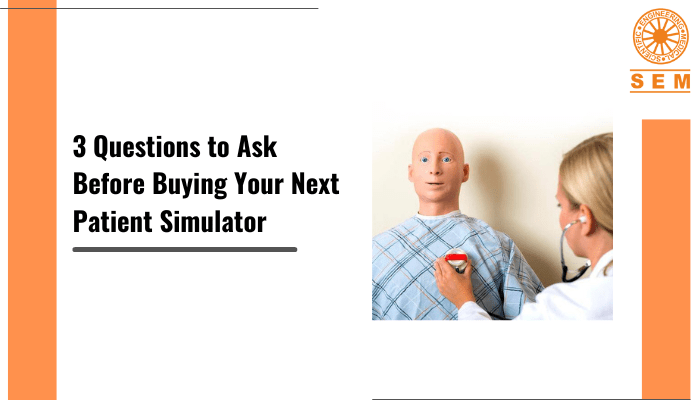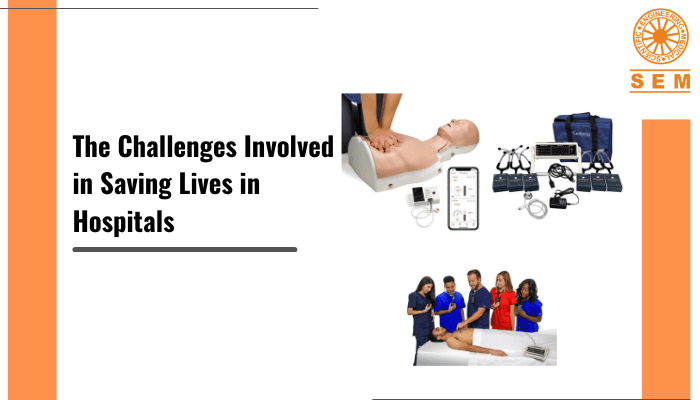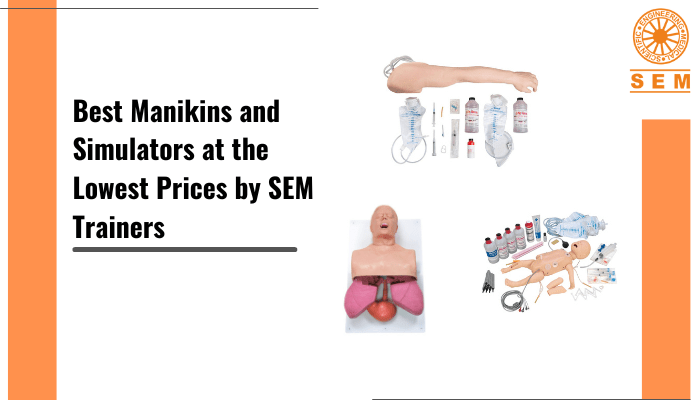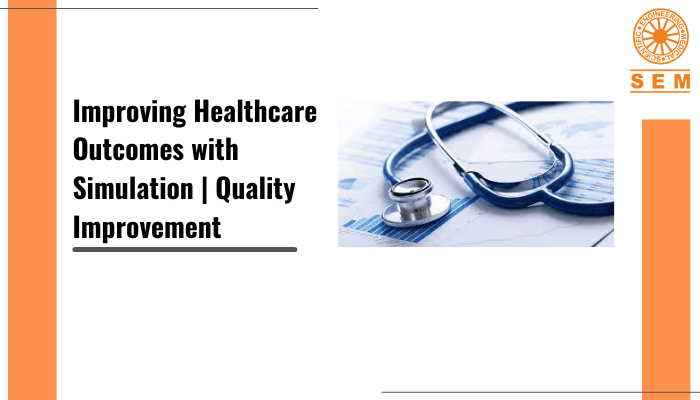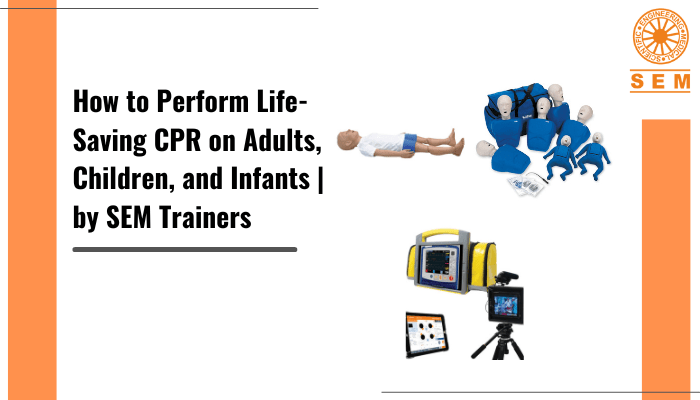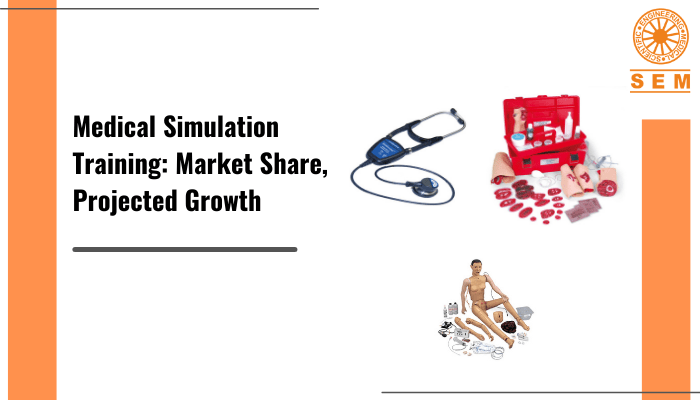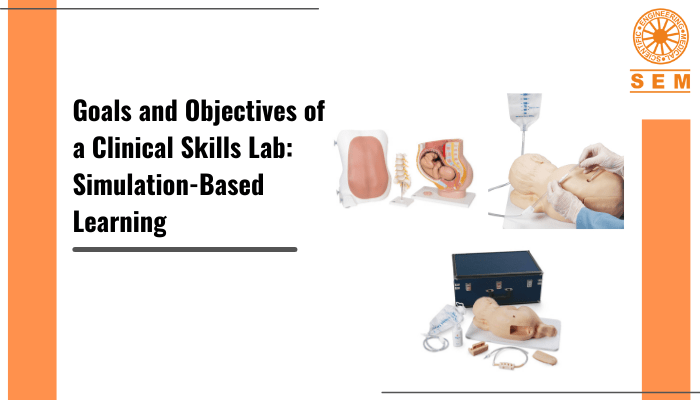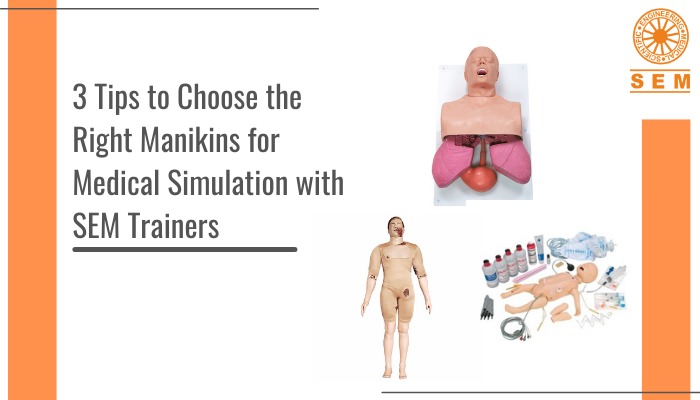Simulators and Manikins that are Changing the Healthcare Scenario | SEM Trainers
It is hard to imagine teaching basic clinical skills without using simulators today. The technology has revolutionized our approach to healthcare and has significantly improved the quality of healthcare available. If you are someone who trains aspiring learners in the medical/nursing fields, you can’t go ahead without thinking about medical manikins and simulators.
When deciding which manikins to purchase, there are many factors you need to consider, like functionality, fidelity, and cost, among others. At SEM Trainers, we bring you the biggest variety of simulators and manikins, all of which are ISO 9001-Certified and acquired from 3B Scientific, meeting the highest quality standards. We provide everything from low-fidelity to high-fidelity trainers, for all your needs.
Here are some of SEM Trainers’ leading medical simulators:
Airway Larry
This airway management trainer torso has realistic anatomy and landmarks, and is perfect for practicing intubation, ventilation, suction, and CPR techniques for both freshers and advanced students.
ADAM-X-HPS-PRO
ADAM is the most realistic, high-fidelity adult male human patient simulator. He’s good for everything from patient care and emergency medical intervention to resuscitation training for dynamic team training. If you’re looking for an Advanced Trauma Life Support trainer, you can’t miss this one.
Adult CPR Manikin
A realistic, full-size manikin with anatomical landmarks for training BLS rescue techniques and CPR.
Advanced Child Airway Management Trainer
With tongue swelling and laryngospasm, this 5-year old child trainer is perfect for practicing intubation, ventilation, suction, and jaw thrust skills on pediatric patients- for both introductory and advanced training.
Patient Care Manikin PRO
A complete patient care and advanced nursing skills solution. This adult, life-size patient manikin has interchangeable genitals and natural movement of the arms, legs, and joints. It’s great for teaching everything from transfer skills and bed care to bathing and bandaging a patient- and everything in between.
Advanced Casualty Simulation Kit
This is an emergency simulation kit with complex wounds testing higher levels of skill in bandaging and patient care while keeping initial expenditures low. It includes a gunshot wound of the palm, a sucking wound of the chest, compound fractures of the humerus and the tibia, and an open amputation in addition to 24 stick-on lacerations and open fracture wounds.
Advanced Lucy
Bringing a human into this world is powerful, so here’s an emotionally engaging birthing simulator, Advanced Lucy, to bring a new level of realism to prenatal to postnatal delivery scenarios. Lucy is anatomically accurate and helps students experience normal and abnormal deliveries, preparing them for the real ones.
Advanced KERi Nursing Manikin
KERi doesn’t seem to have a specific age, but is capable of a lifelike range of motion, realistic patient positioning, and non-pinching joints so it even moves like a real person. And it can convert to male. KERi is great for everything from bandaging and bed baths to catheterization and pap smears.
Articulating Fetus
A realistic, 42cm fetus with articulating head, neck, shoulders, elbows, hips, and knees for more realistic practice of difficult delivery exercises such as Leopold’s or Ritgen’s maneuvers.
Rescue Randy
Randy is a rugged, hyper-realistic manikin designed for enhanced realistic training on procedures that treat the 3 most preventable causes of death (massive bleeding, tension pneumothorax, and airway obstruction). It is compliant with TCCC/TECC scenarios.
Complete Intramuscular Injection Training Kit
This kit has the entire 3B Scientific suite of intramuscular injection simulators and helps practice IM injections anywhere on the body. It also helps locate the correct site for injection using realistic and anatomically accurate upper arm, buttock, and upper leg simulators, and helps feel the correct needle depth too.
This was just a sneak peek into the long list of leading manikins and simulators from SEM Trainers. Visit www.semtrainers.com to see over 1200 products listed on our site and take your pick.
After all, these simulators will end up being used for years, training hundreds, even thousands of students before they’ll need to be replaced. With manikins and simulators, you deserve nothing but the best.

